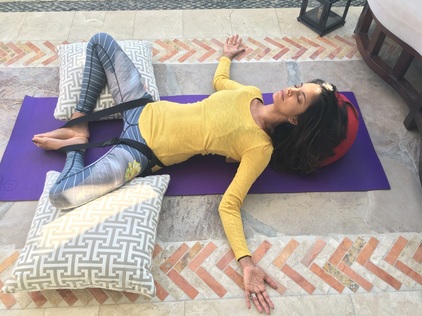|
As I was doing research for an article I was recently writing, I had the chance to review the medical literature on a topic close to my heart – physician wellness and burnout. I was happy to see two new articles published in the current issue of The Lancet, one a systematic review and meta-analysis on interventions to prevent and reduce physician burnout, and the second a commentary co-authored by one of my most memorable medical school advisors, Dr. Ron Epstein. The meta-analysis, authored by Dr. Colin West and colleagues, was a comprehensive review of over 2500 published articles, including several good quality randomized trials and cohort studies, revealing that both individual-based and organizational level interventions can impact large changes in healthcare worker burnout. Individual strategies include programs designed to enhance physician wellbeing and resilience, incorporating elements such as mindfulness to develop greater self-awareness, cognitive behavioral strategies to lower reactivity in stressful situations, mindful communication to strengthen interpersonal relationships, reflection, and small discussion groups. Organizational approaches include structural workplace changes such as duty hour restrictions or alterations in specific clinical work processes. No studies were found incorporating both individual and organizational level strategies, but authors cited the need for research on how these can be combined for a potential synergistic effect to create even greater improvements in healthcare provider wellness. Both articles stressed the importance of delivering multi-level strategies to address the epidemic of healthcare workforce burnout. This is a key point. It is not one thing or the other. Physician colleagues I have talked to can sometimes be quick to site the laundry list of organizational and structural issues that contribute to their increased stress while resisting the potential for integrating new personal practices. There are even strong feelings amongst doctors denying the need for resiliency training altogether, and they are not entirely wrong. Doctors likely do have a strong reserve of coping skills that have helped them succeed thus far, but resilience is not just about bouncing back. Resilience is about maintaining personal health AND being able to adapt, change, and grow. Self-care must be nurtured to help us flourish in this way. Interdisciplinary community must be built between us to support each other while the broader institutions that employ us need to support policies that enhance joy, and meaningful engagement in the clinical practice of medicine. I often remind physicians I have worked with that system and organizational changes, though very effective, can often take a long time to implement. While we keep advocating for the necessary shifts in healthcare, mindfulness and self-care practices are things we can do right now to impact personal and professional wellness in this moment. If it can make us happier, and doesn’t have to take too much time, why not give it a chance? Here are a few personal mindfulness-based strategies to get you started: No time to spare? – Allow every day cues be reminders to pause and bring full awareness to your actions. Maybe it is the walk from your car to work or even just the walk between two patients’ rooms - letting these already alive, precious moments give you permission to bring awareness into the body moving.
Have 3-5 minutes? - Begin developing a relationship with your breath while signaling your parasympathetic nervous system to calm stress reactivity. Building awareness of the subtleties of breath can help us to cue in to changes during the rest of our day. Alterations in depth, pace, and quality of breathing can be powerful reminders for us to take a moment for renewal.
Have 10-20 minutes? – Nurture body:mind awareness and self-care in the queen of all restorative yoga poses – supported reclining bound angle pose.
The above approaches are simple practices for enhancing mindful awareness while eliciting the body’s innate capacity for relaxation. If you are a healthcare professional, for more examples of practices and ideas on integrating this awareness into your clinical practice, see this excellent web resource put together by physicians at the University of Wisconsin. As with the integration of many new behaviors, it can be very helpful to contextualize these strategies with peers in a group setting. If mindfulness based programming for providers is unavailable in your community, consider exploring more about the Mindful Practice curriculum developed at the University of Rochester and their annual retreats for healthcare professionals and educators.
0 Comments
Your comment will be posted after it is approved.
Leave a Reply. |
Rashmi S. BismarkI'm a preventive medicine physician specialized in mindfulness, lifestyle, and community health. I'm a yoga teacher, an educator, a researcher, a devoted mom and expatriate wife, living a blessed global nomad life. Archives
May 2019
Categories |


 RSS Feed
RSS Feed